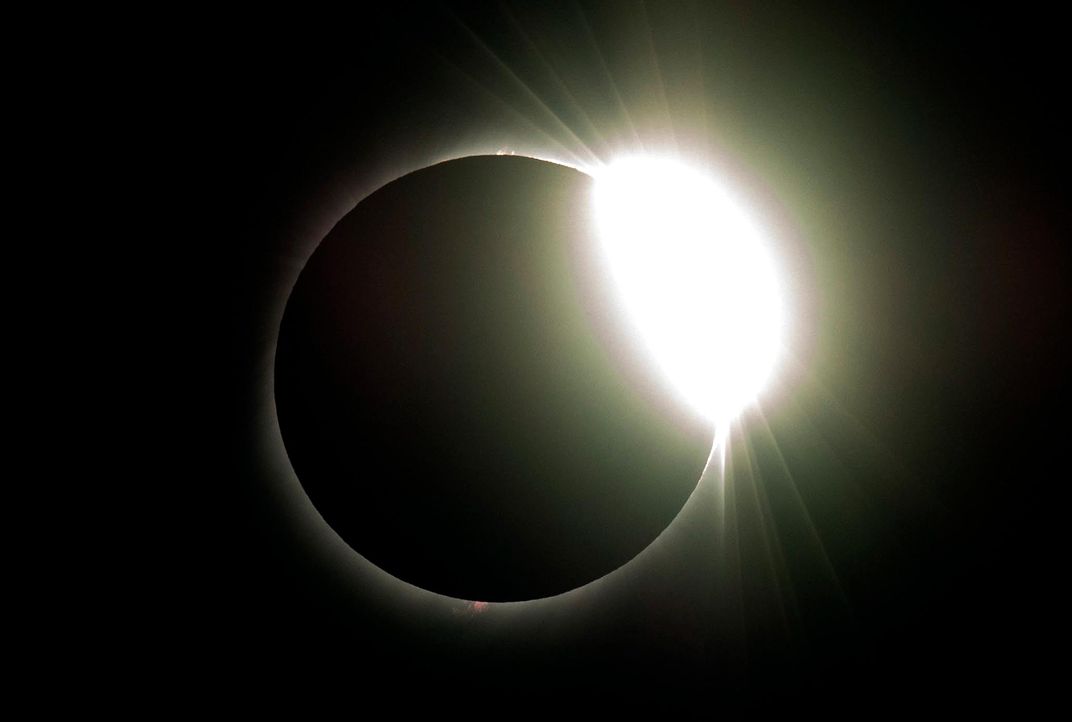The sequel to the Great American Eclipse of 2017 has finally arrived: a Great South American Eclipse, which cast parts of Chile and Argentina in the shadow of the moon as it blocked out the sun. For the first time since a total solar eclipse exposed people in the United States to up to 2 minutes and 40 seconds of totality, another major eclipse crossed the Western Hemisphere.
A total solar eclipse occurs when the moon moves in between the Earth and the sun, blocking all direct sunlight to certain regions of the world. Along the path of the moon’s shadow, viewers experience a sudden daytime darkness known as totality. During these few minutes in the moon’s shadow, observers can see parts of the sun that are normally invisible to the naked eye, including the solar corona—a wispy aura of plasma that surrounds the sun—and solar prominences, which are tendrils of reddish plasma snaking out from the sun.
At 4:38 p.m. EDT on Tuesday, July 2, the total solar eclipse began on the west coast of Chile, with crowds gathered to witness the sight. Along a 125-mile stretch from La Serena, Chile, to Buenos Aires, Argentina, scientists and tourists—including Bill Clinton, Bill Gates and Brian May of the band Queen—arrived to observe a little more than two minutes of totality.
In addition to one of the greatest spectacles nature has to offer, total solar eclipses offer a rare opportunity for astronomers to observe properties of the sun. The sun’s corona, for example, is hotter than the solar surface despite being farther from the center of the sun, a mystery that scientists are still trying to explain. Other solar properties are measured during an eclipse as well, such as the sun’s magnetic field and conditions that lead to coronal mass ejections (great eruptions of plasma that periodically blast out from the sun).
Another total solar eclipse won’t occur until December 14, 2020, again crossing the southern reaches of South America. The next time totality will hit North America won’t be until April 8, 2024, when the shadow of the moon will cross Mexico and Texas before traveling northeast to pass over numerous U.S. states.
/https://tf-cmsv2-smithsonianmag-media.s3.amazonaws.com/filer/a7/b6/a7b6bc55-ea87-4436-8674-995823effed3/gettyimages-1153136359.jpg)
/https://tf-cmsv2-smithsonianmag-media.s3.amazonaws.com/filer/c2/db/c2db5302-36b4-46f5-b7ff-ca1131807da7/gettyimages-1153136545.jpg)
/https://tf-cmsv2-smithsonianmag-media.s3.amazonaws.com/filer/af/1c/af1cef4e-a3d8-4269-86dd-b2208c9da0ed/new_hernandez.jpg)
/https://tf-cmsv2-smithsonianmag-media.s3.amazonaws.com/filer/96/b6/96b6e73b-6964-4d15-afc6-79a86bbf9c2d/new_eclipse.jpg)

/https://tf-cmsv2-smithsonianmag-media.s3.amazonaws.com/filer/22/2d/222dd36b-1a57-4ff3-ba4a-f39883740165/gettyimages-1153323387.jpg)

/https://tf-cmsv2-smithsonianmag-media.s3.amazonaws.com/filer/ea/70/ea707479-82b2-4dab-925a-6ccffc2934ac/gettyimages-1153323737.jpg)
/https://tf-cmsv2-smithsonianmag-media.s3.amazonaws.com/filer/84/ef/84ef2927-3f70-44a1-8d58-4687caa7dd84/gettyimages-1153323733.jpg)
/https://tf-cmsv2-smithsonianmag-media.s3.amazonaws.com/filer/34/43/3443ff34-ff6d-41cf-9fe5-a7af071384f3/gettyimages-1153323386.jpg)
/https://tf-cmsv2-smithsonianmag-media.s3.amazonaws.com/filer/55/6e/556eebd4-c12f-4d9c-bb2d-405fa0bf99d7/gettyimages-1153324238.jpg)
/https://tf-cmsv2-smithsonianmag-media.s3.amazonaws.com/filer/81/b4/81b4e346-9efa-4a47-90a7-cdd24b44bae0/gettyimages-1153323624.jpg)
:focal(1547x1041:1548x1042)/https://tf-cmsv2-smithsonianmag-media.s3.amazonaws.com/filer/34/43/3443ff34-ff6d-41cf-9fe5-a7af071384f3/gettyimages-1153323386.jpg)